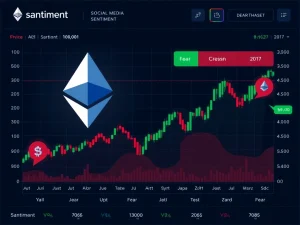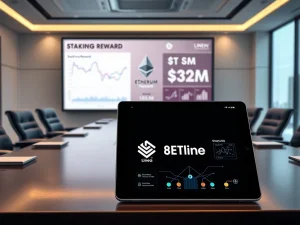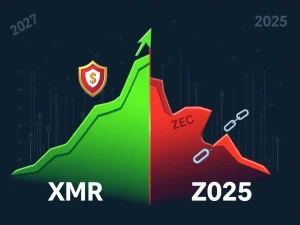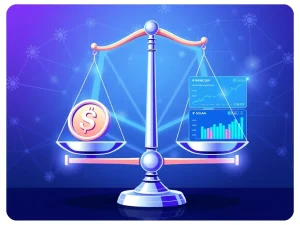BlockDAG’s Breakthrough: Achieving 2,000 TPS on Testnet, Electrifying the Blockchain Scalability Race Against Cardano

In the fast-paced world of cryptocurrency, where innovation is currency and speed is paramount, a new contender is making waves that could redefine the landscape. Imagine a blockchain capable of processing transactions at lightning speed, challenging established giants and offering immediate, tangible solutions. This is precisely what BlockDAG has achieved, demonstrating an astonishing 2,000 transactions per second (TPS) on its testnet. This remarkable feat positions BlockDAG not just as another altcoin, but as a formidable rival to networks like Cardano, which, while highly respected, has historically championed a more methodical, research-driven development approach. The stage is set for an exciting clash of philosophies: immediate, practical scalability versus a meticulously planned, long-term vision.
BlockDAG’s Unprecedented Performance and the Blockchain Scalability Question
The achievement of 2,000 TPS on the BlockDAG testnet is more than just a number; it’s a statement. In an era where blockchain adoption is hindered by network congestion and high fees, particularly during peak usage, a high transaction throughput is not merely desirable—it’s essential. For context, many mainstream blockchains struggle to reach even a fraction of this speed, often leading to frustrating delays and prohibitive costs for users. BlockDAG’s breakthrough directly addresses one of the most pressing challenges facing the crypto space: blockchain scalability.
This immediate scalability signifies BlockDAG’s readiness for real-world applications that demand high transaction volumes, such as global payment systems, high-frequency decentralized finance (DeFi), and even large-scale gaming ecosystems. Unlike many projects that promise future upgrades to tackle scalability, BlockDAG’s architecture is designed for high performance from the ground up, aiming to provide solutions that are ready for deployment now. This aggressive pursuit of immediate utility sets a clear contrast with projects that prioritize years of research and peer-review before significant scaling improvements are rolled out.
Deconstructing the Architectures: How BlockDAG and Cardano Stack Up
The core difference between BlockDAG and Cardano lies in their fundamental technical architectures, reflecting their contrasting philosophies. Understanding these designs is key to appreciating their distinct approaches to security, decentralization, and scalability.
BlockDAG’s Hybrid Approach: Speed Meets Security
BlockDAG leverages a cutting-edge hybrid architecture that combines a Directed Acyclic Graph (DAG) structure with a lightweight Proof-of-Work (PoW) consensus mechanism. Let’s break down what this means:
- Directed Acyclic Graph (DAG): Unlike traditional linear blockchains where blocks are added one after another, a DAG allows for parallel processing of transactions. This means multiple blocks can be confirmed simultaneously, dramatically increasing throughput. Think of it like multiple checkout lanes at a supermarket versus a single lane. This inherent parallelism is a cornerstone of BlockDAG’s ability to achieve high Cryptocurrency TPS.
- Lightweight Proof-of-Work (PoW): While Bitcoin uses a heavy PoW that consumes significant energy, BlockDAG employs a streamlined version. This provides the robust security benefits of PoW (making it incredibly difficult to tamper with transactions) without the extensive energy consumption, ensuring both security and efficiency.
This innovative design allows BlockDAG to eliminate the need for complex off-chain layering solutions (like sidechains or sharding) for scalability, making it a more elegant and integrated solution. The result is a network capable of handling substantial transaction loads without compromising on security or energy efficiency.
Cardano’s Research-Driven Ouroboros Protocol
Cardano, on the other hand, operates on the Ouroboros Proof-of-Stake (PoS) protocol. Ouroboros is renowned for its academic rigor, formal verification, and peer-reviewed design, aiming for the highest levels of security and decentralization. Key aspects include:
- Proof-of-Stake (PoS): Instead of miners solving complex puzzles, validators are chosen based on the amount of ADA they stake, making it significantly more energy-efficient than traditional PoW.
- Layered Architecture: Cardano separates its settlement layer (for transactions) from its computation layer (for smart contracts), providing a modular and upgradeable design.
- Hydra Protocol: While Ouroboros is robust, its current on-chain capacity is limited. Cardano’s long-term scalability solution is Hydra, an off-chain scaling protocol designed to process thousands of transactions per second off the main chain. However, Hydra is still in active development and not yet fully deployed, meaning its high TPS capabilities are a future promise, not a current reality.
To provide a clearer picture, here’s a comparative overview:
| Feature | BlockDAG | Cardano (ADA) |
|---|---|---|
| Primary Consensus | Hybrid DAG + Lightweight PoW | Ouroboros Proof-of-Stake (PoS) |
| Current TPS (Testnet/On-chain) | 2,000+ (Testnet) | ~250 (Current On-chain) |
| Scaling Approach | Immediate, parallel block confirmation | Research-driven, off-chain solutions (Hydra) |
| Smart Contracts Language | EVM Compatible (Solidity) | Plutus (Haskell) |
| User Participation | Mining (X-series hardware), Staking | Staking, Delegation |
| Development Focus | Real-world deployment, developer accessibility | Academic rigor, long-term sustainability |
Developer Ecosystems: EVM Compatibility vs. Haskell’s Learning Curve
The ease with which developers can build and deploy applications on a blockchain is a critical factor in its adoption and growth. Here, BlockDAG and Cardano again present divergent paths.
BlockDAG’s Developer-Friendly EVM Compatibility
BlockDAG’s decision to embrace Ethereum Virtual Machine (EVM) compatibility is a strategic masterstroke. This means that developers familiar with Solidity, the most widely used smart contract language on Ethereum, can seamlessly transition to building on BlockDAG. The benefits are immense:
- Vast Developer Pool: Millions of developers are already proficient in Solidity and EVM environments.
- Existing Tooling: Developers can leverage a rich ecosystem of existing tools, frameworks (like Truffle, Hardhat), and wallets (like MetaMask), significantly reducing development time and effort.
- Seamless Migration: Decentralized applications (dApps) currently running on Ethereum or other EVM-compatible chains can be easily migrated to BlockDAG, opening up a massive potential for ecosystem growth.
This approach significantly lowers the barrier to entry for developers, accelerating application deployment and fostering a vibrant, active ecosystem. It’s a clear signal that BlockDAG is focused on practical utility and rapid adoption.
Cardano’s Plutus and Haskell: Precision at a Price
Cardano’s smart contract language, Plutus, is based on Haskell, a functional programming language known for its high security, formal verification capabilities, and academic rigor. While this approach offers unparalleled precision and reduces the likelihood of bugs, it comes with a steep learning curve for many developers. Haskell is a niche language, and the pool of developers proficient in it is significantly smaller compared to Solidity. This can slow down dApp development and limit the pace of innovation on the Cardano network, despite its robust underlying principles.
Beyond the Code: Mining, Staking, and Ecosystem Growth
A blockchain’s success isn’t solely about its technical prowess; it’s also about its community, funding, and real-world integrations. Both projects have unique approaches to user participation and ecosystem development.
BlockDAG’s Inclusive Mining and Aggressive Expansion
One of BlockDAG’s distinctive features is its offering of dedicated hardware solutions, such as the X10, X30, X35, and X100 mining devices. These devices allow everyday users to participate directly in network validation through mining, democratizing access to earning rewards beyond just staking. This inclusive approach to participation strengthens network decentralization and security, contributing to overall blockchain scalability by distributing the workload.
Furthermore, BlockDAG has demonstrated impressive market traction and strategic foresight. The project has raised over $350 million through its presale, selling an astounding 24.2 billion tokens. This substantial funding underscores strong investor confidence and provides ample resources for continued development and marketing. Strategic partnerships with mainstream entities like Inter Milan and Seattle Orcas highlight BlockDAG’s ambition to integrate blockchain tools into everyday platforms, reaching a broader audience beyond the typical crypto enthusiast. This aggressive push for adoption aims to demonstrate the practical utility of high Cryptocurrency TPS in real-world scenarios.
Cardano’s Staking-Centric Model and Evolving Governance
Cardano’s ecosystem primarily revolves around staking. Users can delegate their ADA to stake pools to earn rewards, contributing to the network’s security without needing specialized hardware. While this is energy-efficient and accessible, it doesn’t offer the direct mining participation seen in BlockDAG.
Regarding dApp activity, while Cardano’s ecosystem is growing, it has faced criticism for slower adoption rates compared to other Layer 1 blockchains. Its Voltaire governance system, designed to transition Cardano into a fully decentralized network run by its community, is still in active development. This long-term, community-driven approach, while commendable for its democratic ideals, can sometimes lead to slower decision-making and implementation compared to more centralized or aggressively managed projects.
The Strategic Divergence: Immediate Impact vs. Long-Term Vision
The divergent trajectories of BlockDAG and Cardano reflect broader trends and debates within blockchain development. Cardano‘s cautious, academic approach prioritizes rigorous research, peer review, and formal verification, aiming to build a blockchain that is fundamentally sound, secure, and sustainable for the very long term. Its reliance on future upgrades like Hydra for significant scalability improvements, while promising, creates a degree of uncertainty in a rapidly evolving market where immediate solutions are often sought after.
BlockDAG, conversely, focuses on immediate scalability, practical interoperability, and accessible tools. By prioritizing speed (2,000 TPS on testnet) and EVM compatibility, it aligns with the growing demand for high-performance, developer-friendly solutions that can deliver tangible results now. Its hybrid DAG Technology coupled with lightweight PoW allows it to achieve impressive throughput without waiting for future off-chain solutions to mature. This focus on real-world deployment and user engagement positions BlockDAG to capture significant developer and user interest in a highly competitive landscape.
BlockDAG’s testnet is already fully functional, supporting critical features like token launches, smart contract deployment, and comprehensive community testing. Furthermore, hardware deliveries are strategically scheduled to align with key project milestones, such as the highly anticipated August 11 price confirmation at $0.0016 per coin. This methodical yet rapid rollout of features and products underscores BlockDAG’s commitment to delivering on its promises and establishing a strong market presence.
Conclusion
The emergence of BlockDAG with its demonstrated 2,000 TPS on testnet marks a significant moment in the blockchain space. It presents a compelling alternative to established players like Cardano, not by dismissing their value, but by offering a different strategic pathway: one focused on immediate, high-performance scalability and broad developer accessibility. While Cardano continues its meticulous, research-driven evolution, BlockDAG is making a powerful case for practical, deployable solutions that meet the urgent demands of the modern crypto economy. As the blockchain industry matures, the competition between these distinct philosophies will undoubtedly shape the future of decentralized technology, offering users and developers more choices than ever before.
Frequently Asked Questions (FAQs)
1. What is BlockDAG’s key technological innovation?
BlockDAG’s core innovation is its hybrid architecture combining a Directed Acyclic Graph (DAG) structure with a lightweight Proof-of-Work (PoW) consensus mechanism. This allows for parallel processing of transactions, enabling high throughput (2,000 TPS on testnet) while maintaining security and energy efficiency.
2. How does BlockDAG achieve 2,000 TPS?
BlockDAG achieves 2,000 TPS primarily through its DAG structure, which allows multiple blocks to be confirmed simultaneously rather than sequentially like traditional blockchains. This parallel processing capability eliminates bottlenecks and significantly boosts transaction throughput.
3. What are the main differences between BlockDAG and Cardano’s development strategies?
BlockDAG prioritizes immediate scalability, real-world deployment, and developer accessibility through EVM compatibility. Cardano, conversely, follows a methodical, research-driven approach, focusing on academic rigor, formal verification, and long-term sustainability, with significant scaling solutions like Hydra still in development.
4. Why is EVM compatibility important for BlockDAG?
EVM compatibility is crucial because it allows developers familiar with Solidity (Ethereum’s smart contract language) to easily build and migrate dApps to BlockDAG. This taps into a vast existing developer community and tooling ecosystem, accelerating dApp development and adoption.
5. How can users participate in the BlockDAG network?
Users can participate in the BlockDAG network through both staking and direct mining using BlockDAG’s dedicated hardware solutions (X10, X30, X35, X100 series). This offers a more inclusive approach to network validation and earning rewards compared to staking-only models.
6. What is the significance of BlockDAG’s presale success?
BlockDAG’s presale success, raising over $350 million and selling 24.2 billion tokens, signifies strong investor confidence and market demand for its technology. This substantial funding provides the project with significant resources for continued development, marketing, and strategic partnerships, bolstering its position in the competitive crypto landscape.










